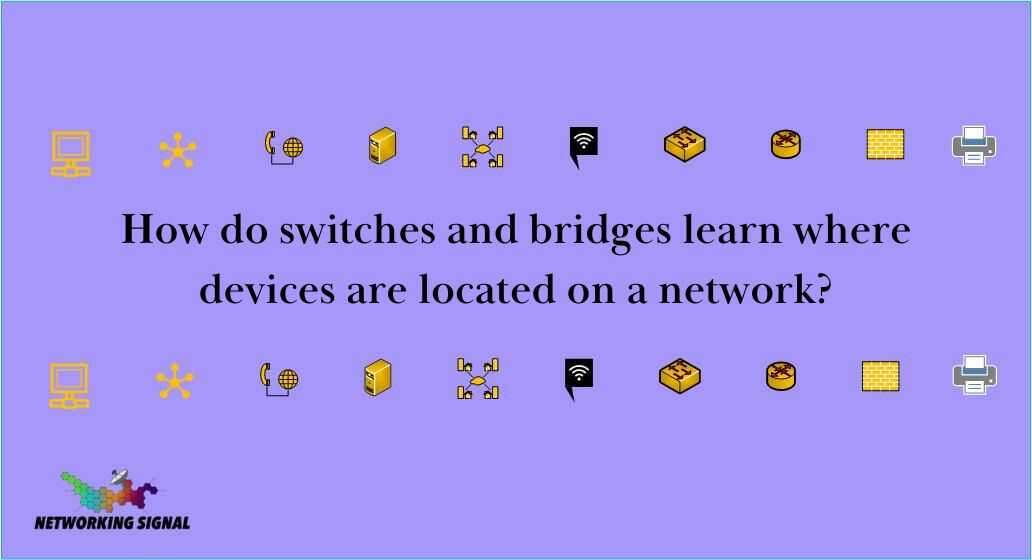How do switches and bridges learn where devices are located on a network?
- When a frame enters a port, the source MAC address is copied from the frame header.
- When a frame enters a port, the source IP address is copied from the frame header.
- When a frame enters a port, the destination IP address is copied from the frame header.
- When a frame enters a port, the destination MAC address is copied from the frame header.
The Correct Answer is: When a frame enters a port, the source MAC address is copied from the frame header.
Explanation
Switches and bridges use a process called address learning or MAC (Media Access Control) address learning to learn where devices are located on the network.
In this process, the switch or bridge monitors all incoming traffic on its ports. When it sees an Ethernet frame arriving from a given device, it records the source MAC address of that frame in its MAC address table.
When the switch needs to send a frame out of its port, it checks the MAC address table to see which port that device is connected to and forwards the frame accordingly.
This process allows the switch or bridge to build up a map of the network and keep track of where devices are located. As new devices join the network, their MAC addresses are also added to the switch’s address table, allowing it to route traffic to and from those devices.
What If When a frame enters a port, the source IP address is copied from the frame header?
The source IP address of the frame is not used by a switch or bridge for learning. Switches and bridges use only MAC addresses for this purpose, as these are more specific to each device on the network. The source IP address of the frame is only used when routing traffic between different networks.
When It Can be Used?
The process of address learning is used by switches and bridges to build an internal map of the network. This allows them to quickly route traffic between devices on the network, without needing to rely on a central router or controller.
It also ensures that traffic from one device doesn’t get confused with traffic from another, as each has its own unique MAC address. Address learning is an essential part of how modern networks operate.

